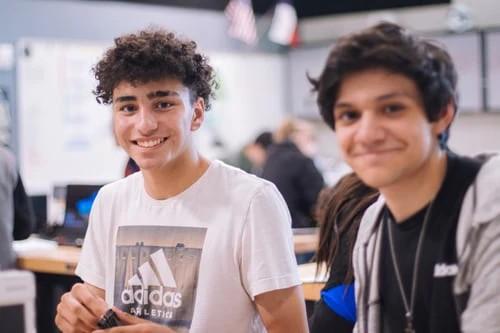ARAB 101, ASL- Arabic as a Second Language
Upon completion of the Arabic letters, the student will have mastered the letters of the Arabic language in its reading, writing and speaking forms, in addition to learning a good number of vocabulary.
ARAB 102, ASL- Arabic as a Second Language
At the end of this level, students will be able to practice greeting and acquaintance, nouns, interrogations, inquiries about housing, daily life conversations, questions about time, present tense, exchange of basic dialogues, forming sentences, reading comprehension, inquiring about food, forbidding, responding in negation, present tense assigned to feminine addresses, speaking About prayer, apology, nominative pronouns, imperative verb, subject, and predicate, talking about study and future tense, object, talking about profession.
ARAB 201, ASL- Arabic as a Second Language
At the end of this level, students will be able to talk about shopping, added and added to it, talking about weather, talking about people and places, expressing an opinion, asking about hobbies, related conscience, talking about travel, "Hajj" and "Umrah", "Muthanna" and preparing, talking about health
ARAB 202, ASL- Arabic as a Second Language
Expression of pain, treatment and diet, Prepositions, negation, past, present and future, word kinds, noun, verb and letter, Provide advice, interrogative tools, subject, appeal and prohibitions Masculine and feminine, noun and verbal sentence, separate nominative pronouns, Asking about directions, conjunctions, the object, the subject and the predicate, the verb parts, the noun in terms of number, the necessary and transitive verb, the reference to the relative and the distant, the plural of the feminine,
Conjunctive noun, negative masculine plural, accusative pronouns
ARAB 301, ASL- Arabic as a Second Language
Expressing admiration for something, expressing support for opinion or opposition, doing the matter, past tense, proposing ideas, connecting noun, requesting more information, presenting reasons and justifications, inviting a person to the house, plurals, numbers, expressing concern, denial and knowledge, pronouns Preposition, adverbs of place, adverbs of time, five verbs, adverbs, expressing a thought.
ARAB 302, ASL- Arabic as a Second Language
At the end of Intermediate:
- You can understand the main points of clear standard input on familiar matters regularly encountered in work, school, leisure, etc.
- You can deal with most situations likely to arise whilst travelling in an area where the language is spoken
- You can produce simple connected text on topics which are familiar or of personal interest
- You can describe experiences and events
- You can talk about dreams, hopes and ambitions
- You can briefly give reasons and explanations for opinions and plans
-
You could consider working in the country using the language (e.g. bar/counter work, waiting service in cafés or basic office work).
ARAB 401, ASL- Arabic as a Second Language
At the end of Upper Intermediate:
-
You can understand the main ideas of complex text on both concrete and abstract topics, including technical discussions in your field of specialization
-
You can interact with a degree of fluency and spontaneity that makes regular interaction with native speakers quite possible, without strain for either party
-
You can produce clear, detailed text on a wide range of subjects and explain a viewpoint on a topical issue, giving the advantages and disadvantages of various options
-
You can do business with speakers of the language in most run-of-the-mill situations.
ARAB 402, ASL- Arabic as a Second Language
At the end of Upper Intermediate:
- You can understand a wide range of demanding, longer texts, and recognize implicit meaning
- You can express yourself fluently and spontaneously without much obvious searching for expressions
- You can use the language flexibly and effectively for social, academic, and professional purposes
-
You can produce clear, well-structured, detailed text on complex subjects, showing controlled use of organizational patterns, logical flow of text, and clear awareness of the audience.
Advanced ARAB 900, ASL- Arabic as a Second Language
At the end of Proficient:
• You can understand with ease virtually everything heard or read
• You can summarize information from different spoken and written sources
• You can reconstruct arguments and accounts in a coherent presentation
• You can express yourself spontaneously, very fluently and precisely
• You can differentiate finer shades of meaning, even in the most complex situations.






